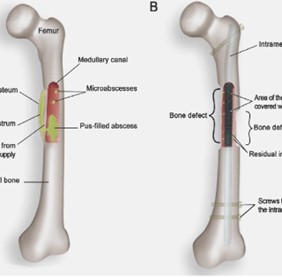The nurse begins collecting the medical history of a child when the child screams and tries to hide behind the parent, dropping a stuffed toy. Which intervention should the nurse implement?
Obtain the essential information as quickly as possible.
Document interactions between the parent and the child.
Ignore the child's behavior, directing questions to a parent.
Include the child's toy in the collection of information.
The Correct Answer is D
The nurse should implement the intervention of including the child's toy in the collection of information when the child screams and tries to hide behind the parent, dropping a stuffed toy. This can help engage the child and make them feel more comfortable during the medical history collection process. The other options (A, B, and C) are not appropriate interventions in this situation.
Nursing Test Bank
Naxlex Comprehensive Predictor Exams
Related Questions
Correct Answer is D
Explanation
If a child's systolic blood pressure is greater than the 90th percentile during a routine clinic visit, the nurse should take the blood pressure two more times during the visit and determine the average of the three readings. This will provide a more accurate assessment of the child's blood pressure. Referring the child to the healthcare provider and scheduling an evaluation of blood pressure in two weeks
A. may be necessary if the child's blood pressure remains elevated, but it is not the next action that should be taken. Measuring the child's blood pressure three times during the visit and determining the highest of the readings
B. is not recommended because it may overestimate the child's blood pressure. Conducting a head-to-toe assessment and omitting repeated blood pressures during the examination
C. is not appropriate because it does not provide an accurate assessment of the child's blood pressure.
Correct Answer is C
Explanation
During the initial phase of treatment for osteomyelitis, the nurse should instruct the child and parent to ensure that there is no weight bearing on the affected extremity. This may require the use of assistive devices such as crutches or a wheelchair. Administering topical antibiotic therapy, providing passive range of motion exercises, and scheduling ice pack applications to the infected area are not appropriate interventions during the initial phase of treatment.
Topical antibiotics may be used later in the course of treatment, after the initial phase of intravenous antibiotics has been completed.
Passive range of motion exercises may be appropriate during the later phases of treatment to prevent joint contractures.
Ice pack applications may be appropriate for pain relief, but they are not a primary intervention for osteomyelitis.

Whether you are a student looking to ace your exams or a practicing nurse seeking to enhance your expertise , our nursing education contents will empower you with the confidence and competence to make a difference in the lives of patients and become a respected leader in the healthcare field.
Visit Naxlex, invest in your future and unlock endless possibilities with our unparalleled nursing education contents today
Report Wrong Answer on the Current Question
Do you disagree with the answer? If yes, what is your expected answer? Explain.
Kindly be descriptive with the issue you are facing.
